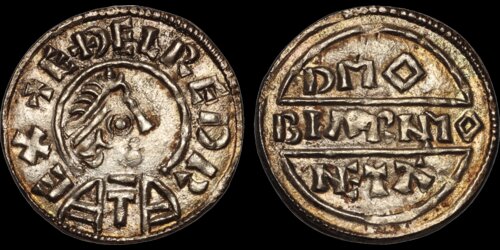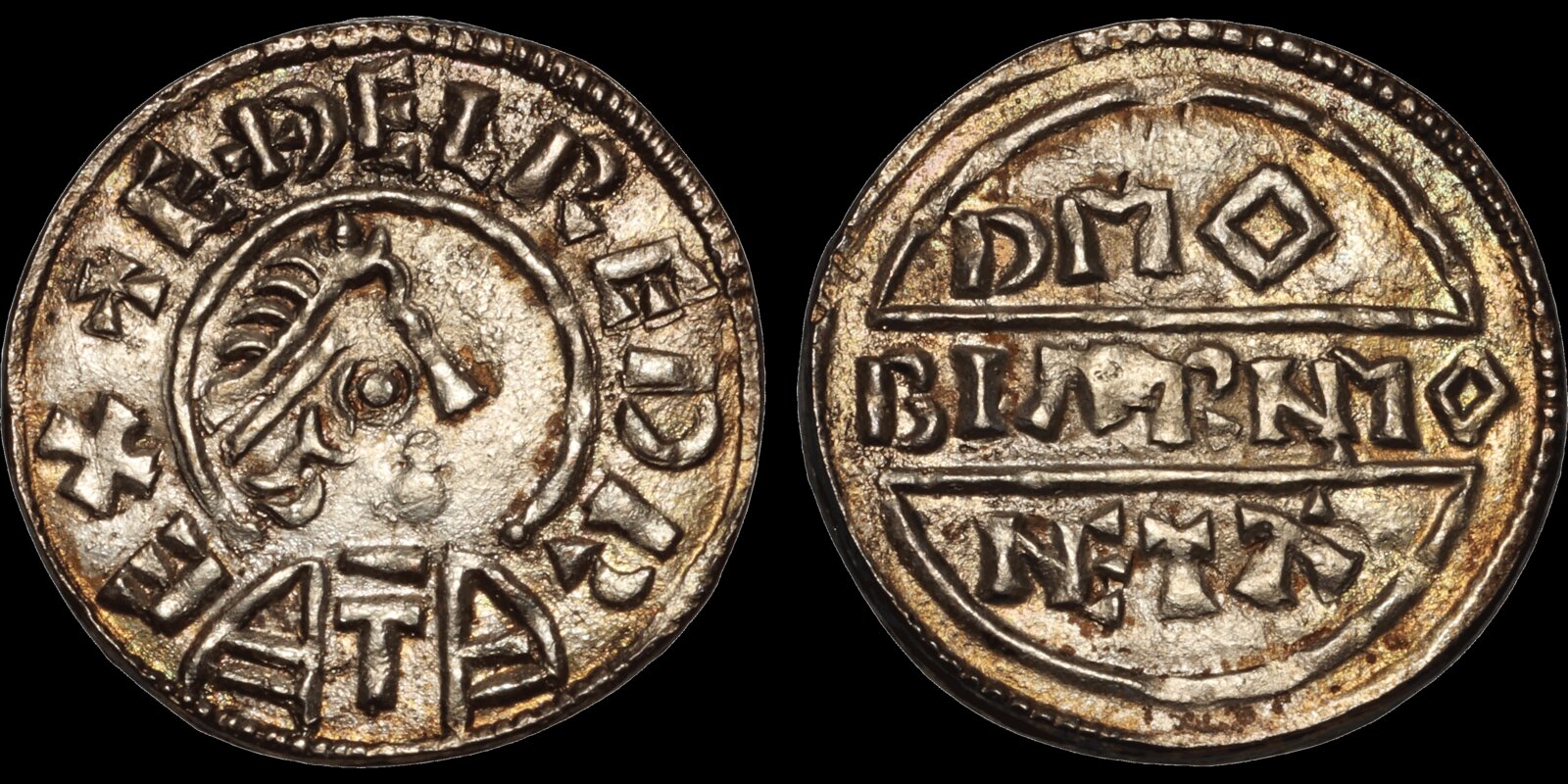Search All Current Lots for Sale:
Printed Auction 44 Lot 144

Electrotype of English hammered coinage. Aethelred I. King of Wessex. 865-871. Penny electrotype (double-thick). 21 mm. Type i. Biarmond, moneyer. Diademed bust right; +EDELREDR—EX / BIARNMO across center; DMO in lunette above; NETΛ in lunette below. BMC II (1893) p. 28:3. S.1055. (584 in earlier edition). As made.
This is an electrotype copy of a hammered English coin in the British Museum. Each piece is identified in one of the BMC catalogs published in 1887 and 1893 and, occasionally, in the more recent SCBI volumes of British Museum Anglo Saxon coins (SCBI 63 and 67, published 2013 and 2016). Photographs of some were used in the Seaby publication, Standard Catalog of British Coins Part 1 first published in 1962. The images remained in the annual Seaby publications until 2007 when the Standard Catalog began publishing images in color. Unlike copies of BMC ancient coins that were made in quantity, the Anglo-Saxon pieces were apparently made with no intention of making them publicly available and they seldom appear in the market.

